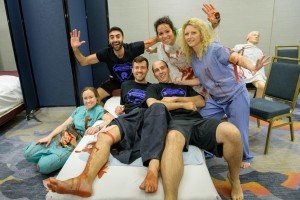From 2000 to 2011 there were 154 active shooter scenarios at healthcare facilities, according to the Annals of Emergency Medicine. The most likely setting for such atrocities? The emergency department.
While hospital security certainly provides a heroic service in keeping staff and patients safe, often perpetrators sneak guns in through ambulances, or take them from security guards. Even if the ED isn’t the immediate setting of an active shooter event, victims are brought from other parts of the hospital, making the department an epicenter in these violent incidents.
To help prepare you for such an event, ACOEP is pleased to offer the Active Shooter Scenario Training. Back by popular demand, this track is a must-be-at event for both novices to the topic as well as those who attended the 2016 Active Shooter Scenario Training.
“No one wants to think it will happen to them,” says Stephanie Davies, DO, FACOEP, who is responsible for planning the track. “but everyone should be prepared if it does. Our last course focused on the emergency department and the physician’s role in the active shooter scenario. At Spring Seminar we are greatly expanding our mass casualty scenario to include EMS, fire and police at an offsite location. This will create a more stressful fight or flight training environment. We will be going off site to participate in a stress-induced moulage, complete with pyrotechnics.”
Throughout the eight-hour course you will focus on hands-on lockdown and lockdown failure training, understanding law enforcement and hospital security response limitations, and response protocols to avoid patient abandonment. You will also take advantage of additional hands-on practice, including scenarios with EMS, police, and fire officials to enter and clear the ED.
Life-like situations help you to better appreciate the fight or flight response and train for the triage process and
patient care with extremely limited resources. Most importantly, you will return to your hospital with all the tools you need to establish your own training to keep yourself, your coworkers, and your patients safe.
“Because active shooter situations are often over within 10 to 15 minutes, before law enforcement arrives on the scene, we must be prepared both mentally and physically to deal with an active shooter situation,” says Davis.
Space is limited and we anticipate a sell-out crowd. Please register early!




Leave A Comment
You must be logged in to post a comment.